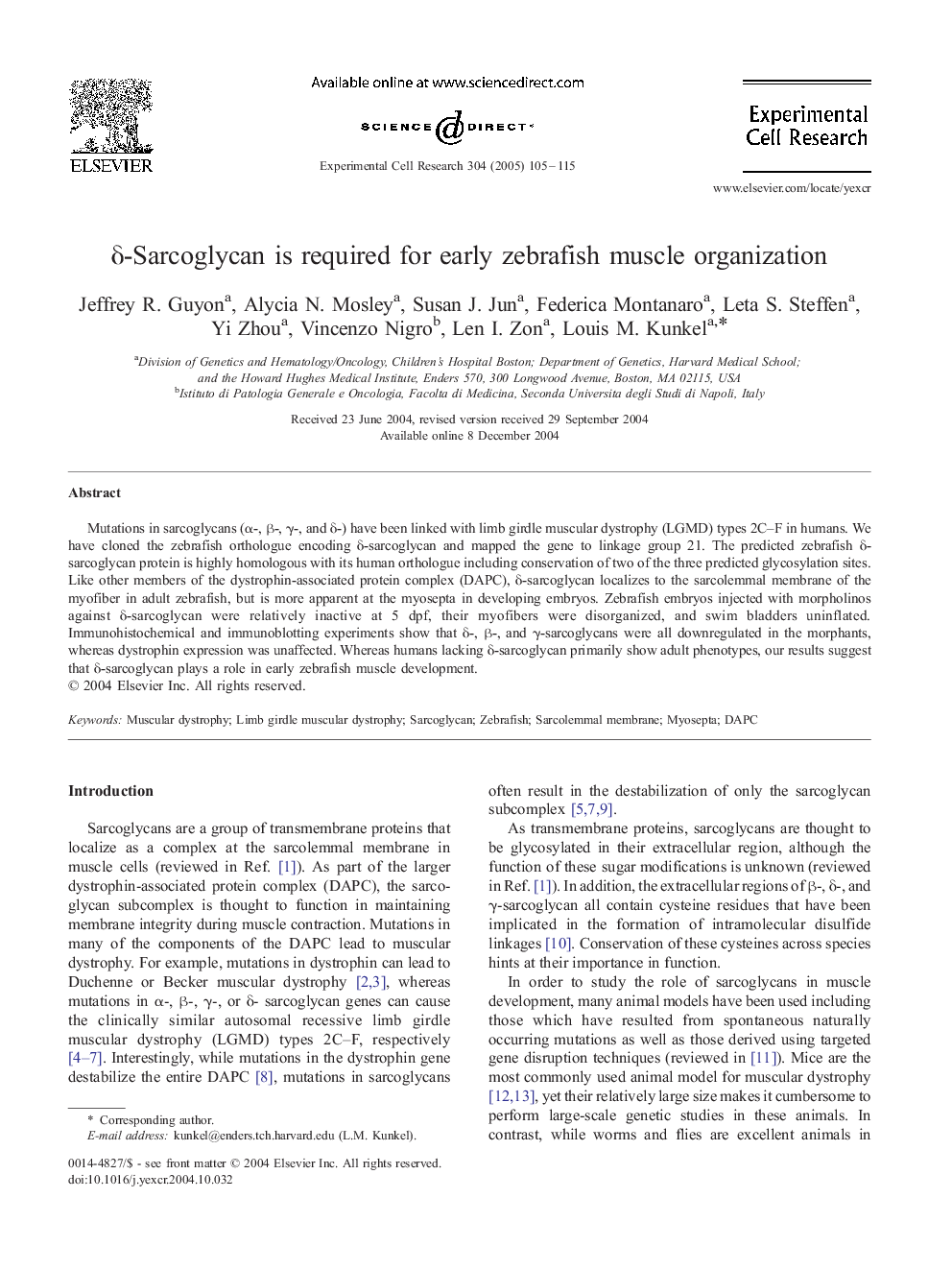| Article ID | Journal | Published Year | Pages | File Type |
|---|---|---|---|---|
| 10905601 | Experimental Cell Research | 2005 | 11 Pages |
Abstract
Mutations in sarcoglycans (α-, β-, γ-, and δ-) have been linked with limb girdle muscular dystrophy (LGMD) types 2C-F in humans. We have cloned the zebrafish orthologue encoding δ-sarcoglycan and mapped the gene to linkage group 21. The predicted zebrafish δ-sarcoglycan protein is highly homologous with its human orthologue including conservation of two of the three predicted glycosylation sites. Like other members of the dystrophin-associated protein complex (DAPC), δ-sarcoglycan localizes to the sarcolemmal membrane of the myofiber in adult zebrafish, but is more apparent at the myosepta in developing embryos. Zebrafish embryos injected with morpholinos against δ-sarcoglycan were relatively inactive at 5 dpf, their myofibers were disorganized, and swim bladders uninflated. Immunohistochemical and immunoblotting experiments show that δ-, β-, and γ-sarcoglycans were all downregulated in the morphants, whereas dystrophin expression was unaffected. Whereas humans lacking δ-sarcoglycan primarily show adult phenotypes, our results suggest that δ-sarcoglycan plays a role in early zebrafish muscle development.
Keywords
Related Topics
Life Sciences
Biochemistry, Genetics and Molecular Biology
Cancer Research
Authors
Jeffrey R. Guyon, Alycia N. Mosley, Susan J. Jun, Federica Montanaro, Leta S. Steffen, Yi Zhou, Vincenzo Nigro, Len I. Zon, Louis M. Kunkel,
